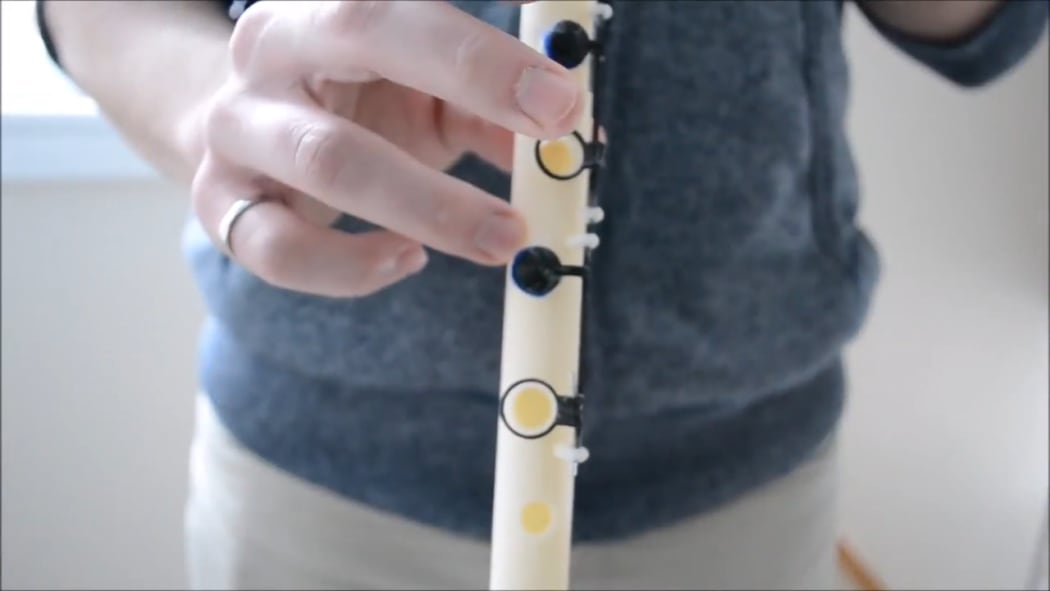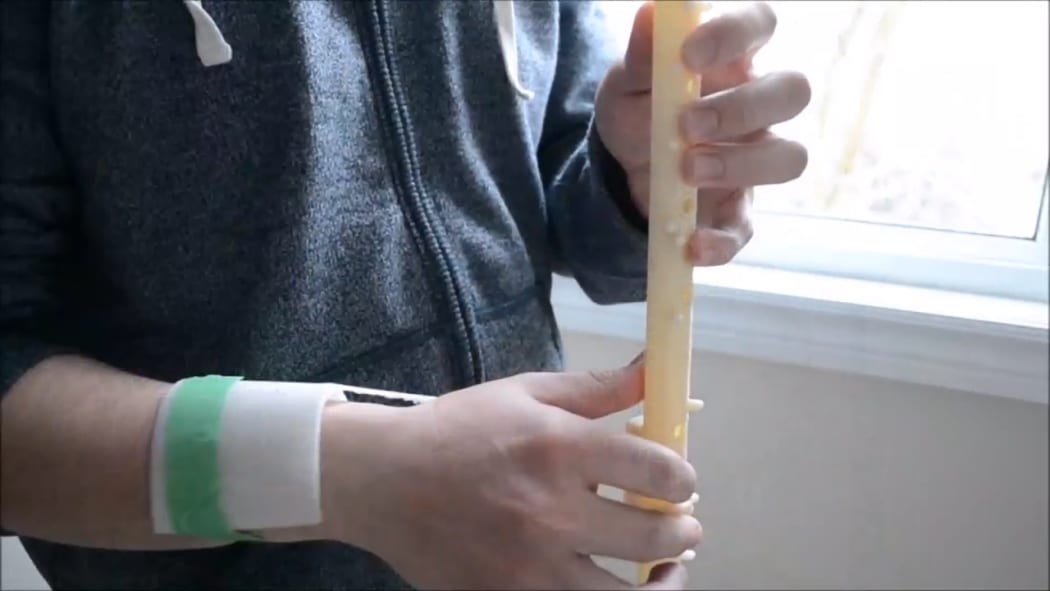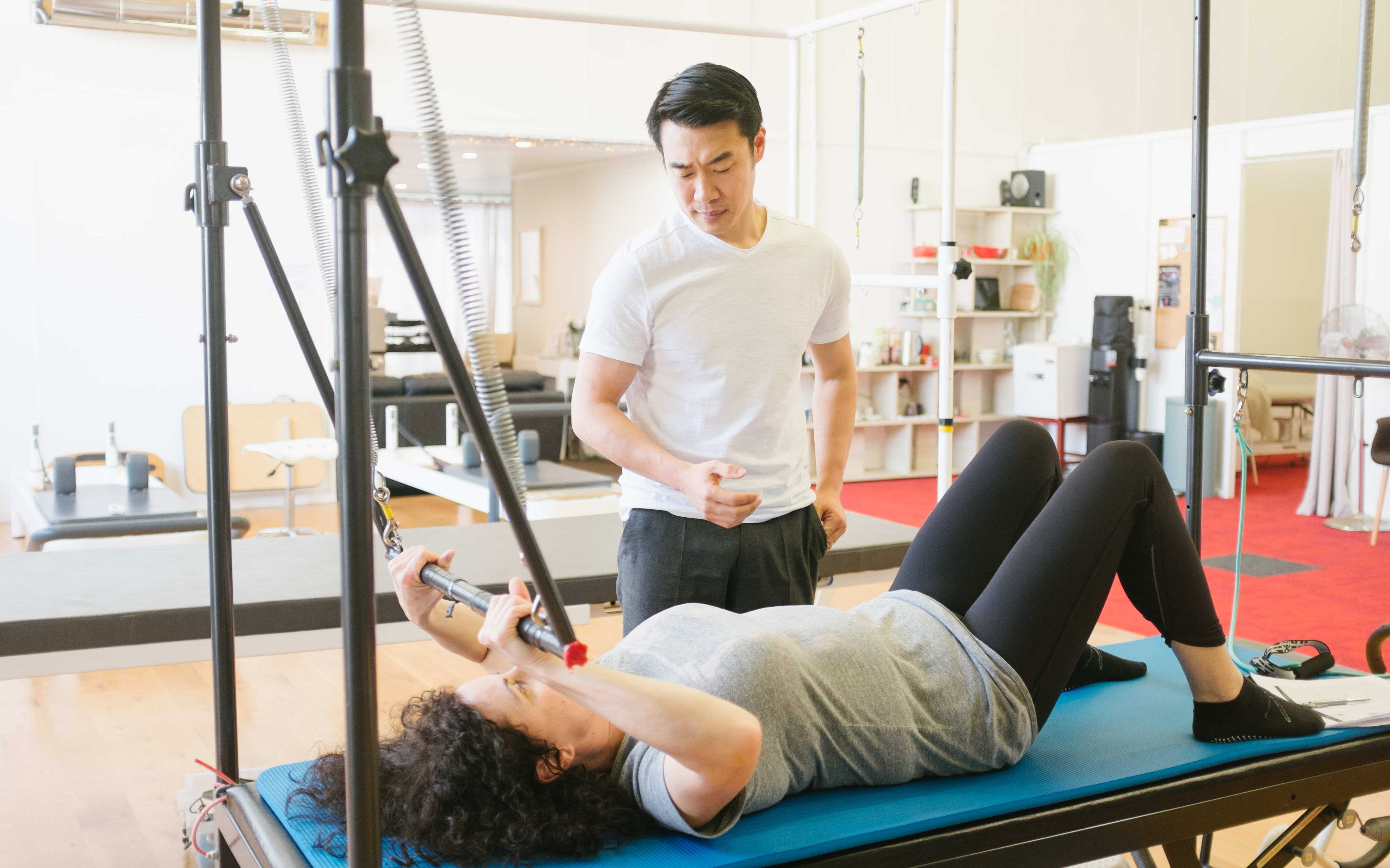3D printing has revolutionized housing, medicine and now music.
The number of musicians experiencing repetitive strain injury is growing and instruments are being designed to try and stop the damage.

3D printed clarinet Photo: youtube
Leading physiotherapist Francis Joung says research suggests approximately 80 percent of musicians have moderate pain and between 17 to 49 percent have significant enough pain to affect whether they can continue to play.
He works with the Auckland Philharmonia Orchestra on a regular basis to ensure its musicians are match fit. He sees approximately 50 percent of the musicians throughout the season. And he’s worked with visiting soloists including international cellist Johannes Moser.

Johannes Moser Photo: Supplied
Instruments are designed to sound beautiful, but are not always easy to hold. Now instruments are getting a 3D make over to help ease the load and leading the way is the Ottawa Symphony Orchestra.
The OSO founded the 3D String Theory Project, including the National 3D Printed Musical Instrument Challenge which encouraged Canadian residents to design “ergonomically optimized” instruments.
The winning design announced last week came from Robert Hunter who designed a clarinet and brace to evenly redistribute weight through the musician’s hand and arm while playing.
The OSO is taking this one step further by incorporating 3D printed instruments into its season opening performance this November.
The repertoire includes Bach’s The Art of Fugue (on normal instruments), Frank Zappa plus a new work written for 3D printed instruments by Harry Stafylakis, who combines classical music with heavy metal, soul and grime.
The instruments, which include two viola de spalla (or shoulder viola), two violins and two violas, are part of the Orchestra’s 3D String Theory project which aims to bring together technology and classical music.

3D printed clarinet Photo: youtube
While 3D printed instruments could help reduce injuries, Francis Joung believes it’s not the silver bullet for musicians with RSI. “It’s a lifestyle,” he says. “Its how they practice, not how they hold the instrument. It’s great to have an alternative, but it’s not a solution.”
There are many causes to RSI in musicians. With younger musicians he says it’s often because of poor technique, while with more established musicians it’s the repetitiveness of playing that leads to sensitization.
Most people shake their arms and carry on, Francis says, but if it’s ignored and doesn’t go away it can lead to problems.

Physiotherapist Francis Joung Photo: Supplied
Significant injuries and strains can end careers. Francis has had a few patients very close to quitting. He says it’s not uncommon for musicians to cope with the pain for years without saying anything. “When it gets to the point when it’s really bad, it gets overwhelming,” he says. “But with the right management… most of them recover well.”
Complete rest is also not the answer. He says resting and not practicing will not help the injury heal. “There is a lot of false information out there. You only get better by practicing correctly,” Francis says.
He believes attitudes to discussing issues like RSI have changed. There used to be a stigma within professional orchestras about injuries, but many now, including the APO, have a strong culture supporting musicians. “There is no stigma seeing me,” Francis says.

